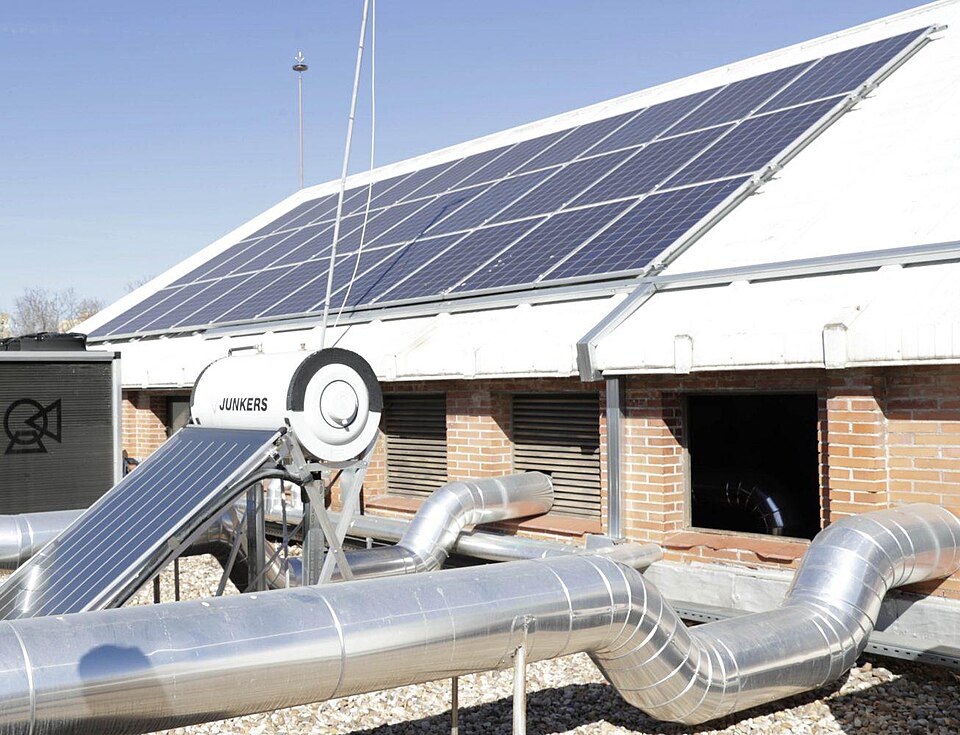Scientists in Spain have simulated the combination of storage systems for capacity for heating to power with lithium ion batteries to provide energy needs and the production of heat pump of an electrified home. PV-self-consumption appeared to rise by a maximum of 20% and the live costs of energy decrease by 7%.
Researchers from the Spain’s Technical University of Madrid (UPM) have carried out a techno-economic analysis of the integration of power-to-heat-to-power storage (PHPS) systems with lithium-ion (Li-ion) batteries and heat pumps (HPS). The study focuses on a fully electrified home in Madrid and simulates the performance via PVsyst and EnergyPlus.
“Hybridization of Li-ion batteries with PHPs can benefit from their complementarity characteristics, so that they can meet both peak and basic tax demand, while using the waste heat generated by PHPs as a valuable by-product,” the group explained. “Such a hybrid system could considerably improve PV-self-consumption, reducing the dependence on the electricity of the grid”
The academics simulated two systems in the study. One was for control, with only an Li-ion battery (L-system), and the other used both Li-ion and PHPs in a hybrid form (LP system). In both the surplus of PV generation is stored in the batteries or in the low temperature Thermal energy storage (LTEs) system. The LTEs system consists of a power-to-heating (P2H) converter and a hot water storage (HWS) tank.
The PHPS system includes both P2H and H2P converters, as well as an energy storage unit at high temperature (HTEs). A resistive heating is considered for the P2H converter, where the H2P conversion is achieved using a heat engine with a certain discharge efficiency at the PHP’s operating temperature.
Each case was tested with either an electric heater, where the performance coefficient (COP) is 1, or with a heat pump, with an agent of 2.7. The annual demand for the home was supposed to be 20 MWh, of which 16 m the Nelder-Mead Simplex algorithm was used to optimize the system based on the level of energy (LCOE).
The simulations showed that if the building uses a heat pump with a Hybrid Li-Ion PHPS storage, the minimum LCOE would be € 76 ($ 86.5)/ MWh, its PV-self-consumption will reach 68.3% and its round trip efficiency (RTE) will be 96.9%.
If only Li-ion is used with the heat pump, measurements are € 77/ MWh, 68.3%and 96.9%, respectively.
In the case where electric heating is used, and no heat pump, the hybrid Li-ion PHPs will result in a minimum LCOe of € 147/ MWh, a PV-self-consumption rate of 79.5%and an RTE of 91.7%.
If only Li-ion is used with electric heating, measurements are € 149/ MWh, 68.6% and 97.1% respectively.
“Under the assumptions of this study, the hybrid solution reduces the live costs of consumed energy by 7% compared to a system that is exclusively dependent on Li-ion batteries, while at the same time increases the PV self-consumption by a maximum of 20%,” the academics concluded. “Moreover, the absorption of a heat pump improves the efficiency of the system, which means that a reduction in demand for electricity is not only possible, but also the reduction of important system components. Remarkably enough, the addition of a heat pump does not replace PHPs in favor of Li-ion batteries, but stimulates the Hybridara and LiSps and LiSps, which, the Hybridaries,, and, the LiPps and LiSps,, and, that, the, that, that, the, the LiPps and LiPps, and, and, and the LiPps and LiPps, and, and, that, that, that, that, the complementary, and, that, the complementary, and, that, the complementary. Do not promote these technologies. “
The results were presented in “Integration of lithium-ion and thermal batteries with heat pumps for improved photovoltaic self-consumption“Published in Applied energy.
This content is protected by copyright and may not be reused. If you want to work with us and reuse part of our content, please contact: editors@pv-magazine.com.

